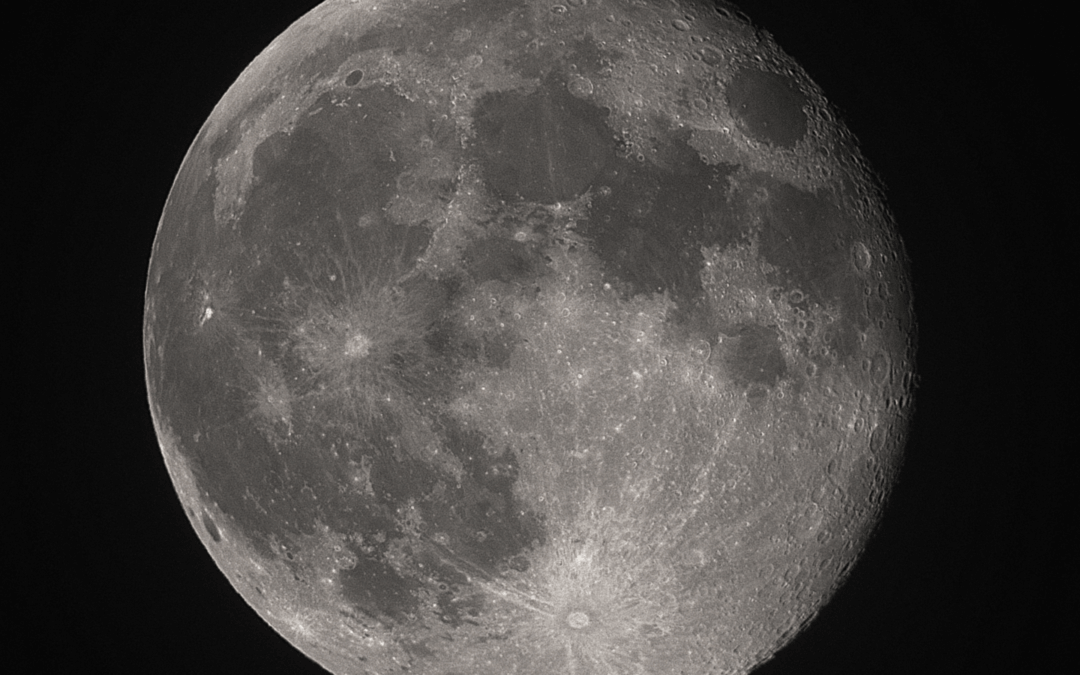This month, as people across the US prepare their various feasts for Thanksgiving, let’s celebrate the season by sharing our amazing night sky with loved ones! This is a great time to take advantage of a host of seasonal objects coming into view. One of our favorite features of the eVscope is how easy it makes sharing observations with other people, so it’s a great addition to a holiday party (or an excuse to throw one).
Move over, Friendsgiving. We’re hosting a friends observing party — Astrogiving! Grab some friends, your family, your eVscope, and feast your eyes on some stunning deep-sky objects newly visible this season.
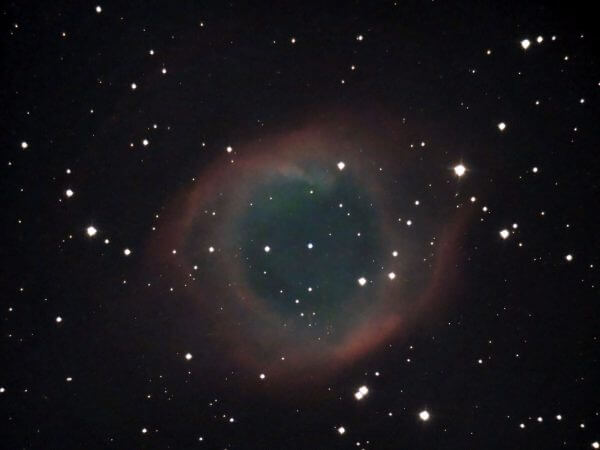
Helix Nebula
This oval-shaped cloud of dust is the closest nebula to Earth, and its incredible colors make it a spectacular viewing target for impressing your friends and family. Found in the constellation Aquarius, its striking appearance has earned the Helix Nebula names like the “Eye of God” or “Eye of Sauron.”
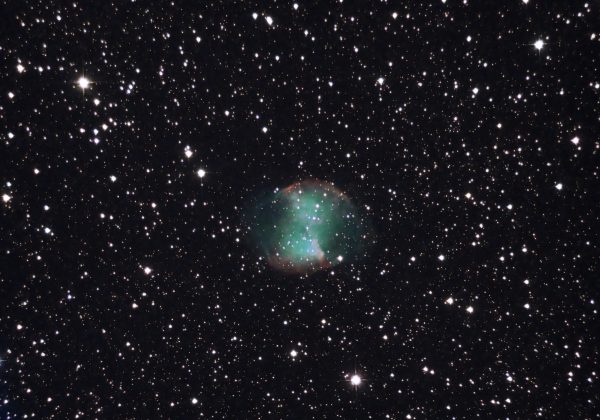
Dumbbell Nebula
Also known as the Apple Core Nebula, is it perhaps the scraps from a cosmic apple pie? In reality, this planetary nebula is so bright that it is visible through binoculars. But you’ll want a decent telescope to see the white dwarf at its center.
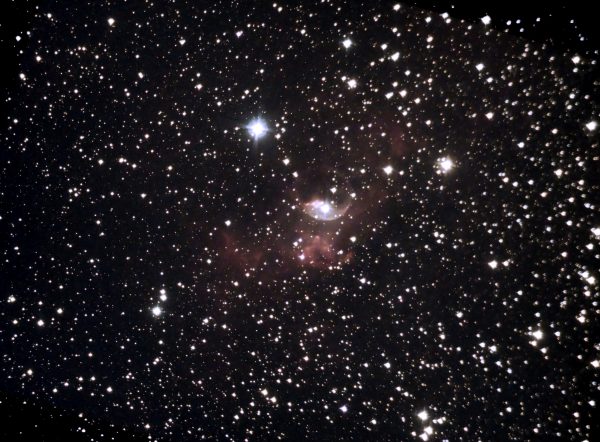
Bubble Nebula
Of course, you could use this egg-shaped nebula to glaze that apple pie crust! NGC 7635, known more commonly as the Bubble Nebula, is a glowing cloud of ionized gas around the huge, hot star at its center. Discovered in 1787 by William Herschel, and located in the constellation Cassiopeia, the celestial egg is three to 10 light-years across.
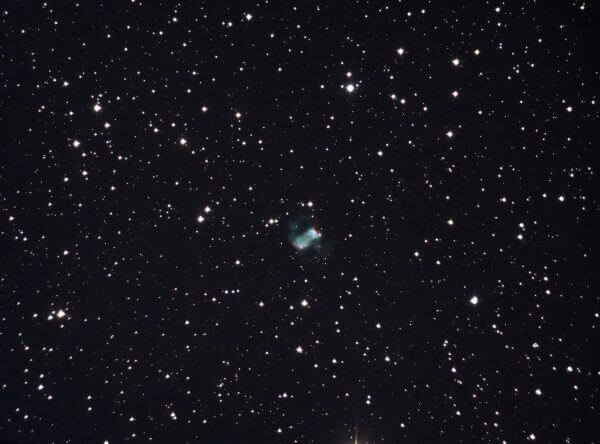
Little Dumbbell Nebula
Pop open a bottle for this next observing target, sometimes referred to as the Cork Nebula! Seen in Perseus, the Little Dumbbell Nebula gets its butterfly shape from two neighboring stars that ended their lives in powerful stellar outbursts.
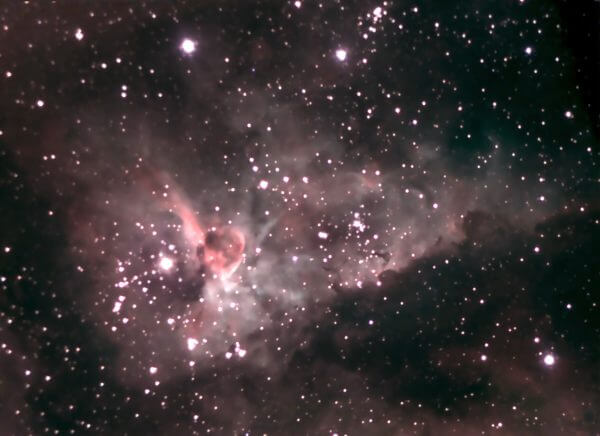
Carina Nebula
For observers in the Southern Hemisphere, don’t miss the Carina Nebula. This object is huge — four times larger than the Northern Hemisphere’s famed Orion Nebula — and will fill up the eVscope’s entire field of view with its majestic swirls.
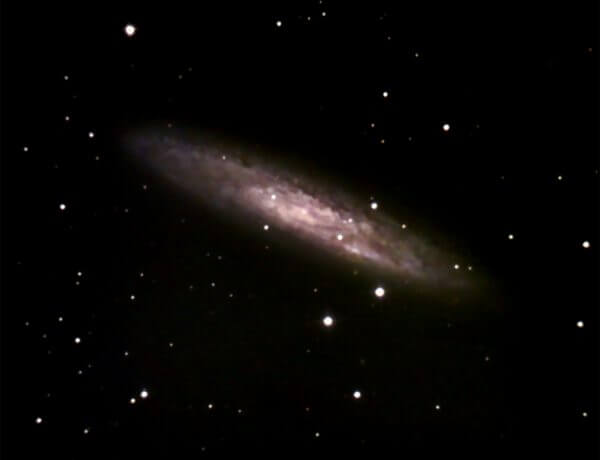
Sculptor Galaxy
Another great observing target is the Sculptor Galaxy, an intermediate spiral galaxy found in its namesake constellation. This galaxy stretches across the eVscope’s field of view making it perfect to share with friends and family. Astronomers think the galaxy has a supermassive black hole at its center with a mass 5 million times greater than the Sun.
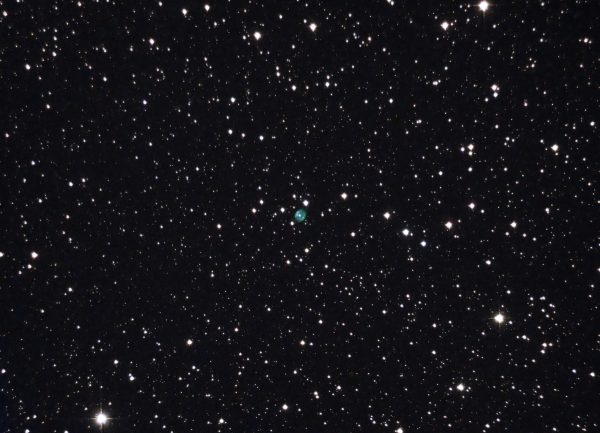
Blue Flash Nebula
The brilliant azure color of this Southern Hemisphere planetary nebula is sure to impress. Find the small, bright Blue Flash Nebula in the constellation Delphinus, 7,500 light-years from Earth. It’s central star is a white dwarf that’s thought to be a binary system.
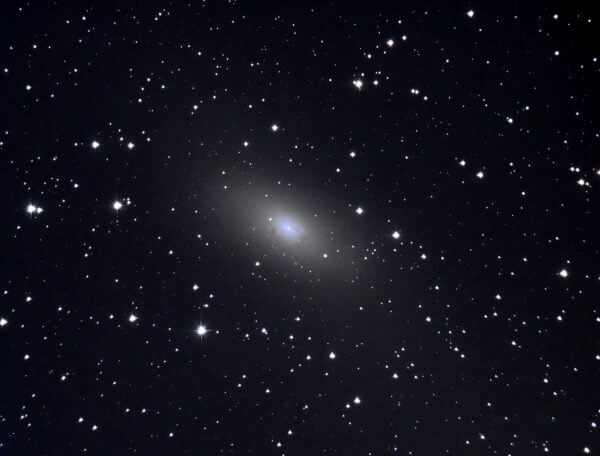
Messier 110
To really amaze your friends with your astronomical knowledge, try Messier 110. The small elliptical galaxy is one of the closest to us — a satellite galaxy of our neighboring Andromeda Galaxy. It was discovered by the famed astronomer Caroline Herschel, who was the first woman to receive a wage for her scientific work, and created the basis for the New General Catalogue (NGC) of deep-sky objects still in use today.
We encourage you to share your observations and join the conversation through our Facebook, Instagram and Twitter pages using the hashtag #UnistellarChallenge!
If you’d like to send us your observations by email, send them to [email protected].
Clear skies! 🔭
Further readings
3 Reasons to observe this month
Every month, discover three unmissable celestial events to observe with your Unistellar telescope.
Observing Eclipses on Jupiter: Cosmic Spectacles Through a Telescope
The latest Unistellar App Update, version V3.0, is now live. Explore a smooth stargazing experience !
Unistellar Community Included In Multiple Scientific Papers
Did you know Unistellar Citizen Astronomers are often cited in published scientific papers? Find out how you can contribute too!
What Are the Names of All the Full Moons in 2024?
Discover the enchanting names of the full moons in 2024. Delve into the unique character of each lunar spectacle and embrace the allure of the night sky.
New Unistellar App Update: Version 3.0
The latest Unistellar App Update, version V3.0, is now live. Explore a smooth stargazing experience !
What to Observe This November: Open Star Clusters and More
These Halloween deep-sky objects will add some light to those dark, spooky nights. Treats, tricks, and telescopes await!




